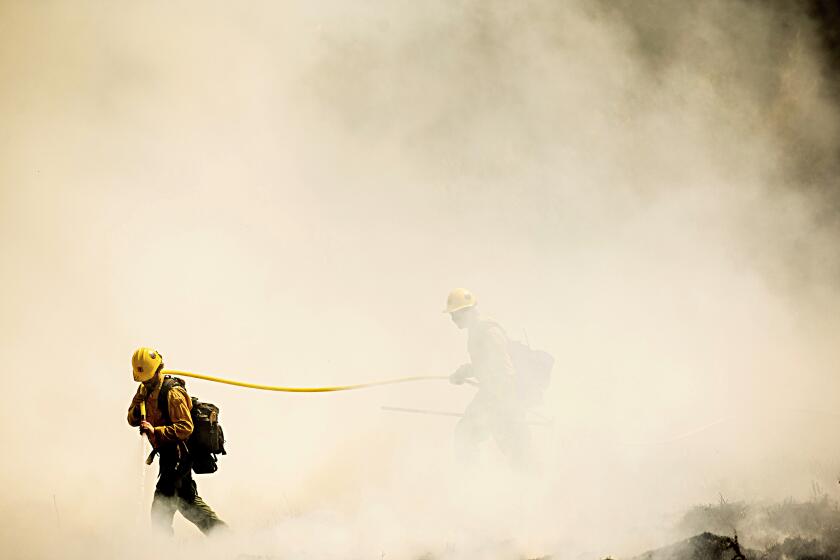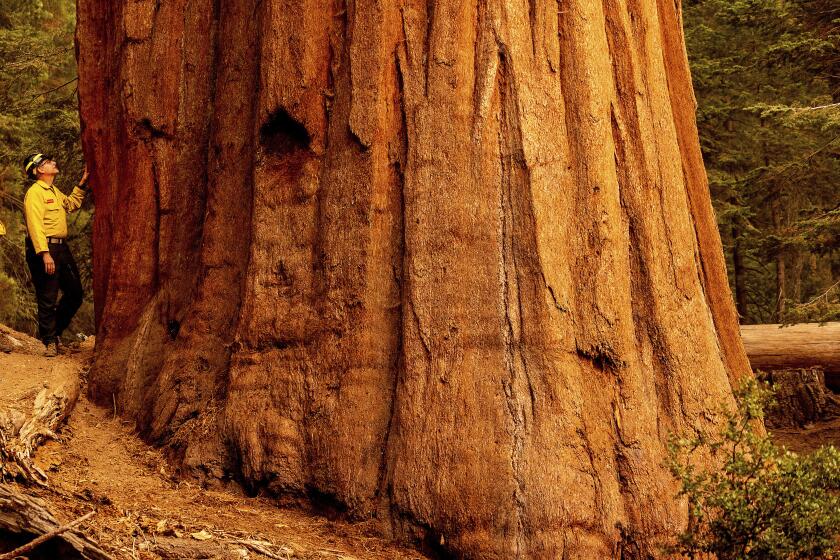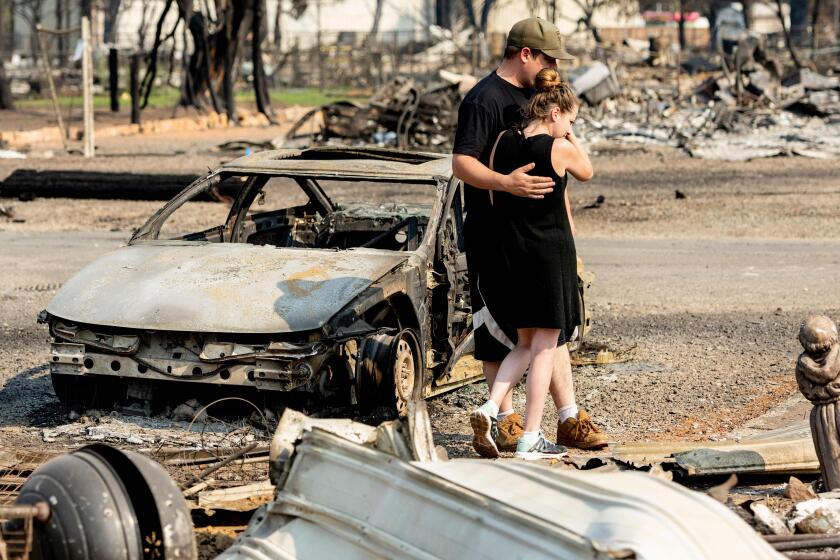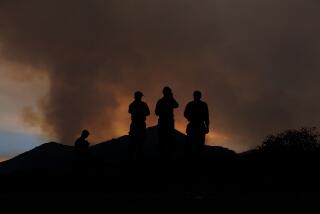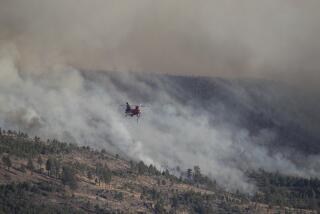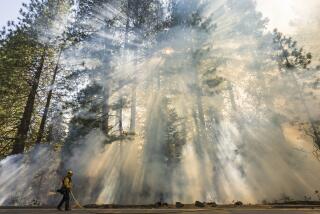Fawn fire forces emergency declaration in Shasta County as Windy fire spurs more evacuations
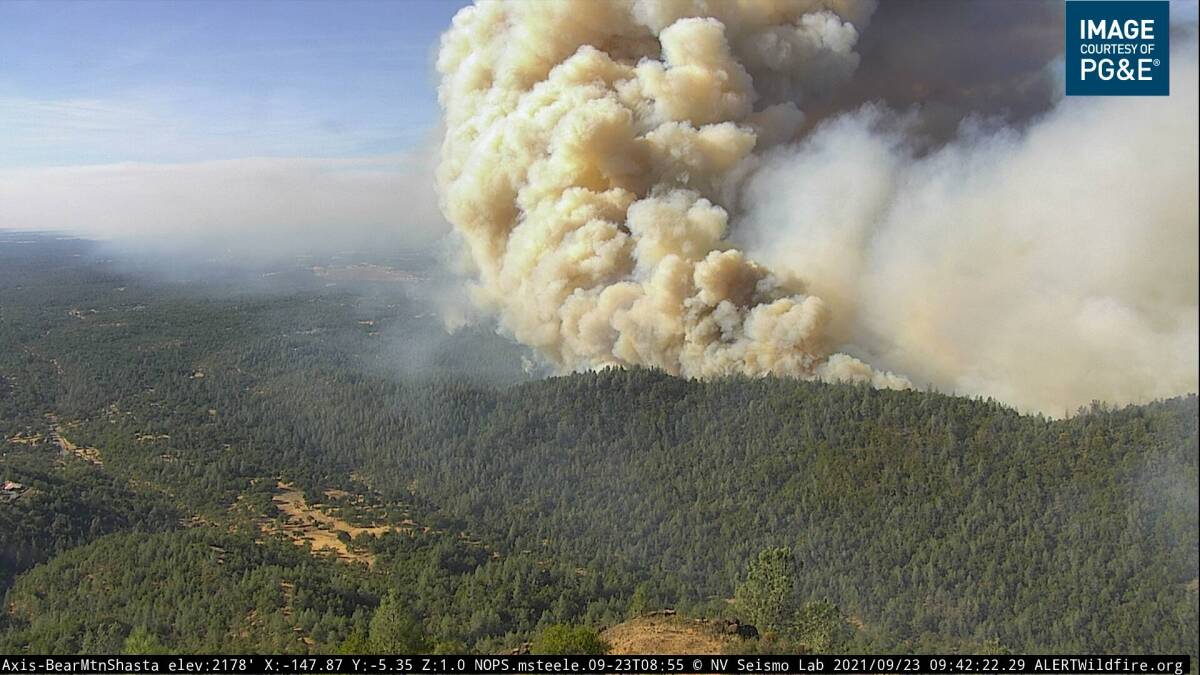
The Windy fire swirling around California’s giant sequoia trees spurred additional evacuation orders, while a new blaze in Shasta County sent residents fleeing from thick smoke and encroaching flames on Thursday.
The Fawn fire emerged in the Mountain Gate area near Redding on Wednesday afternoon. By midday Thursday, it had exploded to 1,200 acres, with Shasta County Sheriff Michael Johnson declaring a local emergency. By nightfall, it had grown to at least 5,500 acres.
The sheriff’s office has issued evacuation orders for several areas near the fire, including portions of Holiday Road, Old Oregon Trail and Bear Mountain, as well as evacuation warnings for some areas near the 5 Freeway. A map of evacuated areas can be found here.
Residents under evacuation orders are being advised to leave immediately and bring important belongings, medications and pets with them.
A temporary evacuation point in the Shasta College parking lot was closed because of the college’s evacuation, officials said. A new shelter has been set up at First Church of the Nazarene at 2225 Bechelli Lane in Redding.
By Thursday night, about 4,000 residents had evacuated, with “30,000 residents affected,” according to the Shasta County Sheriff’s Office.
“There have been structures lost but there is no estimate on what type or number at this time,” the Sheriff’s Office said.
The fire, which is burning near Fawndale and Radcliff Roads northeast of Shasta Lake, was 5% contained Thursday, according to the California Department of Forestry and Fire Protection.
Cal Fire Shasta-Trinity spokeswoman Cheryl Buliavak said the cause of the fire was still under investigation, but she confirmed that a woman was arrested Wednesday night on “fire-related charges.”
Cal Fire has identified the woman as Alexandra Souverneva, 30, of Palo Alto. In a statement, the agency said firefighters encountered Souverneva in the brush near the burgeoning fire around 8 p.m. Wednesday, and she told them she was dehydrated and in need of medical treatment.
A subsequent interview led officers to “believe Souverneva is responsible for causing the fire,” Cal Fire said, noting that they are recommending a charge of “arson to wildland,” with an enhancement because of the state of emergency California is facing amid several wildfires.
The Shasta County district attorney’s office did not immediately respond to inquiries about whether charges had been filed.
The fire started in steep, rugged terrain and is burning in heavy timber, Buliavak said.
“Between the terrain, the vegetation being extremely dry — overnight we had some windy conditions that caused the fire to spot in multiple areas — there are a lot of factors that are challenging firefighters,” she added.
Aerial footage showed a massive plume of smoke billowing over the area.
The KNP Complex and the Windy fire have burned through nearly 60,000 acres combined. Smoke from the fires will affect several counties in California.
Meanwhile, the Tulare County Sheriff’s Office ordered the evacuation just before 8 p.m. Wednesday of several areas near the Windy fire, which is burning in Sequoia National Forest and on the Tule River Reservation.
Newly evacuated areas include Camp Nelson, Pierpoint, Coy Flat, Mountain Aire, Cedar Slope, Alpine Village, Rogers Camp and Sequoia Crest. All earlier evacuation orders remain in effect.
“You’re going to be able to smell smoke,” operations section chief Seth Mitchell said during an evening update. “You’re going to be able to see flame from the community of Camp Nelson.”
The fire had swelled to 43,745 acres and was 6% contained Thursday morning, officials said.
Incident spokesman Steve Rasmussen attributed the fire’s latest run — a substantial 12,000 acres — to a dry air mass that brought low humidity and winds to the area, which helped fan the flames as they fed on critically dry vegetation.
“The fire actually grew on all sides — north, east, south and west,” he said. “It pushed out and tested all of the containment lines.”
For days, the Windy fire has threatened the Trail of 100 Giants inside Long Meadow Grove, where at least one giant sequoia known as the Bench Tree was damaged by fire atop its crown.
Crown fires can be catastrophic even for the fire-adapted trees, with last year’s Castle fire burning 10% to 14% of the world’s sequoia population.
Though the blaze has been active along most of its perimeter, Rasmussen said it was primarily crawling southeast toward the newly evacuated areas, as well as the community of Johnsondale, which was evacuated last week.
Johnsondale is one of many small towns tucked into the alpine terrain near the national forest and is a popular spot for vacationers, Rasmussen said. Images showed glowing red smoke plumes and flames rising behind a nearby lake.
Mitchell said Wednesday night that no structures had been lost in Johnsondale but that “there has been an increase in fire behavior today, and resources are in there trying to secure that perimeter.”
Long Meadow Grove remains a top priority for firefighters, he added. There were several small spot fires within the Trail of 100 Giants on Wednesday, but no other sequoias have seen significant damage.
Crews have used controlled burns, protective foil and other protective measures to guard Sequoia National Park.
Just north of the Windy fire in Sequoia National Park, the KNP Complex grew to 33,046 acres Thursday with no containment.
The towering trees inside Giant Forest remained relatively unscathed Thursday, officials said, and the nearby historic cabin communities of Mineral King, Cabin Cove and Silver City are still a top priority as the fire pushes east.
Firefighters have wrapped some of the century-old cabins in protective foil in much the same way they did the giant trees, and officials are hoping that a rocky rim known as Paradise Ridge will continue to stymie flames as crews lay hand lines and drag bulldozers where they can.
“We’re really going to throw a lot of horsepower at this,” operations section chief Jon Wallace said of the area.
Fire incident spokesman Jack Owen said containment has so far evaded crews because of incredibly challenging terrain.
“It’s steep and rocky — mountain goats probably wouldn’t even go there,” he said.
“We’re right smack in the middle of wildfire peak season,” Cal Fire Chief Thom Porter said. The outlook for the rest of the year includes more heat and dryness.
Gov. Gavin Newsom on Thursday visited the site of the KNP Complex, where he signed legislation outlining a $15-billion climate package, including funds for tackling the state’s worsening wildfires.
More than 2.25 million acres have burned across the state in 2021, with officials warning that this year’s fire season is far from over.
“Although summer is over, it is important to remember that the fall season has seen some of the largest [and] most destructive wildfires,” Cal Fire said in a tweet Wednesday, the first day of fall.
As if fulfilling that forecast, several small fires broke out that day, including the Fawn fire.
A separate fire broke out in San Bernardino on Wednesday afternoon, growing to about 100 acres and prompting evacuation orders before it was contained.
Times staff writer Gregory Yee contributed to this report.
More to Read
Sign up for Essential California
The most important California stories and recommendations in your inbox every morning.
You may occasionally receive promotional content from the Los Angeles Times.
